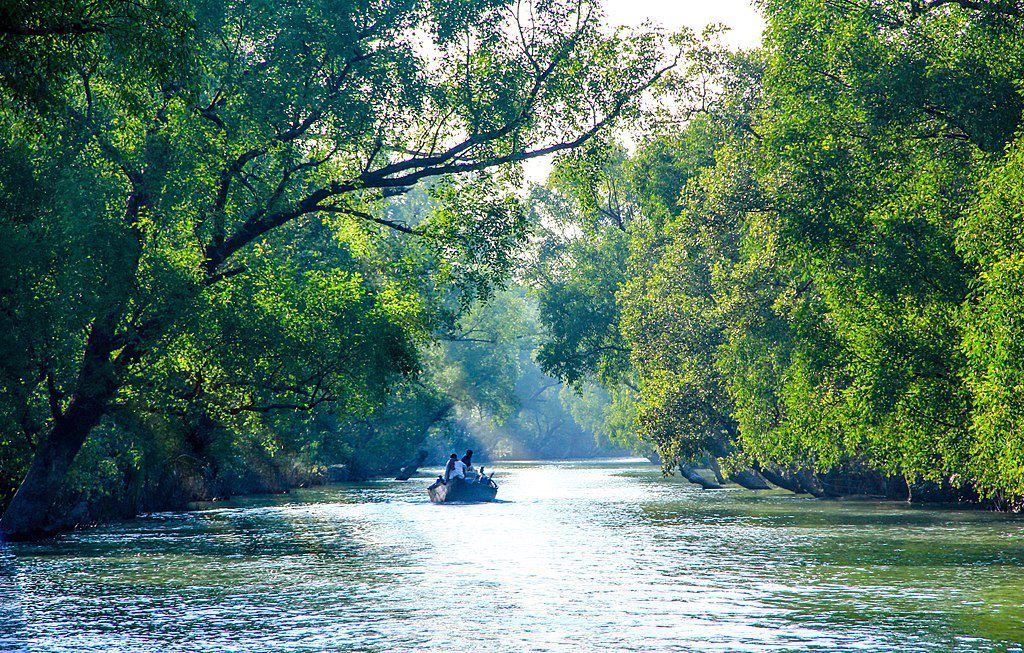The Sundarbans mangroves is a world heritage site and Bangladesh’s most precious natural resource. To restore the Sundarbans, the department of environment has been allocated 10 km around the Sundarbans reserved forest, an Ecologically Critical Area (ECA), since 1999. The ecosystem, biodiversity, and environment are suffering huge threats due to the human intervention that means ECA. Bangladesh and India shared many resources, and Sundarbans is one of those. Both the countries are developing, and their developmental activities are leading the Sundarbans to its extinction. Increasing industrial waste and water pollution creates transboundary harm. The majority of the issues in the Sundarbans are shared by Bangladesh and India, which is a violation of the No Harm principle.
During this 20’th century the Sundarbans is suffering the most. Natural disasters like Cyclone, Sidr, Amphan degrades Sundarbans severely and man-made factors like Coal-fired power plant, Oil spill, Mangrove tree cutting and Plastic waste littering are the most significant environmental threat to the Sundarbans. These types of disasters are creating threats to the carbon disposal, animal and plant communities. Also as the local community people are poor so they depend on Sundarbans for their survival. Increasing salinity, Heavy metal pollution harms trees and the local people as physiological progress may malfunction to the heart, brain, kidneys, etc. It also leads ideal nutrients and elements to be pushed from their natural locations, compromising their biological function. These are affecting problems of the Sundarbans biodiversity. Still the Sundarbans mangroves fought back, avoiding even further destruction. That’s why Sundarbans must be restored and sustained.
Due to pollution in the Sundarbans, the no-harm principle is violated; so, if both the countries adopt the No harm principle, it can be a preventive way to restore the Sundarbans. The no-harm principle is customary law which talks about no one can harm another state or territory or people or no man’s land for their development activities. No harm principle was established in the 1st period of the development of environmental laws. From the Stockholm declaration to the Rio declaration, the law has become more specific; indicating that what should not be done can violate the No Harm principle. It adds more limitations and obligations to every state. So, firstly every state should remember not to violate the No Harm principle when they are in development activities because they are more hazardous for transboundary pollution.
Necessary action and management plans are required to improve and also to stop degrading the Sundarbans. Some rules and regulations are imposed when the Sundarbans are declared as Ecologically Critical Area (ECA). If anyone breaks these rules, they have to be punished. Considering the importance of ecology, biodiversity, and natural heritage site of Sundarbans, there are nine key points that the department of environment needs to take into consideration to develop an effective ECA management rule, and they are:
- Forests cannot be destroyed
- No stuff can be done which harms the water quality
- Nothing can be done here which affects the aquatic life
- Waste cannot be disposed in the water body of ECA area
- No oysters, corals etc can be collected
- Mineral extraction shouldn’t be done
- No industries can be created there
- Wild animal habitat shouldn’t be hampered
- No animals can be hunted
Also they must find an alternative way for the local poor communities so that they can reduce their dependency on Sundarbans. There should be scientific forest management system to sustain the mangrove. This given suggestion should be adequate to prevent the Sundarbans transboundary harm. It explicitly explains that the ECA areas should not be hampered or destroyed anyway as those areas are already threatened. That is why the department of the environment of Bangladesh has made these rules. Suppose both the countries follow these rules, and India announced the Sundarbans as an ECA as Bangladesh did. It can be a preventive way to stop transboundary pollution and an effective way not to violate the No Harm principle.

Nurun Nawar Nolok
Department of Environmental Science and Management
North South University






























